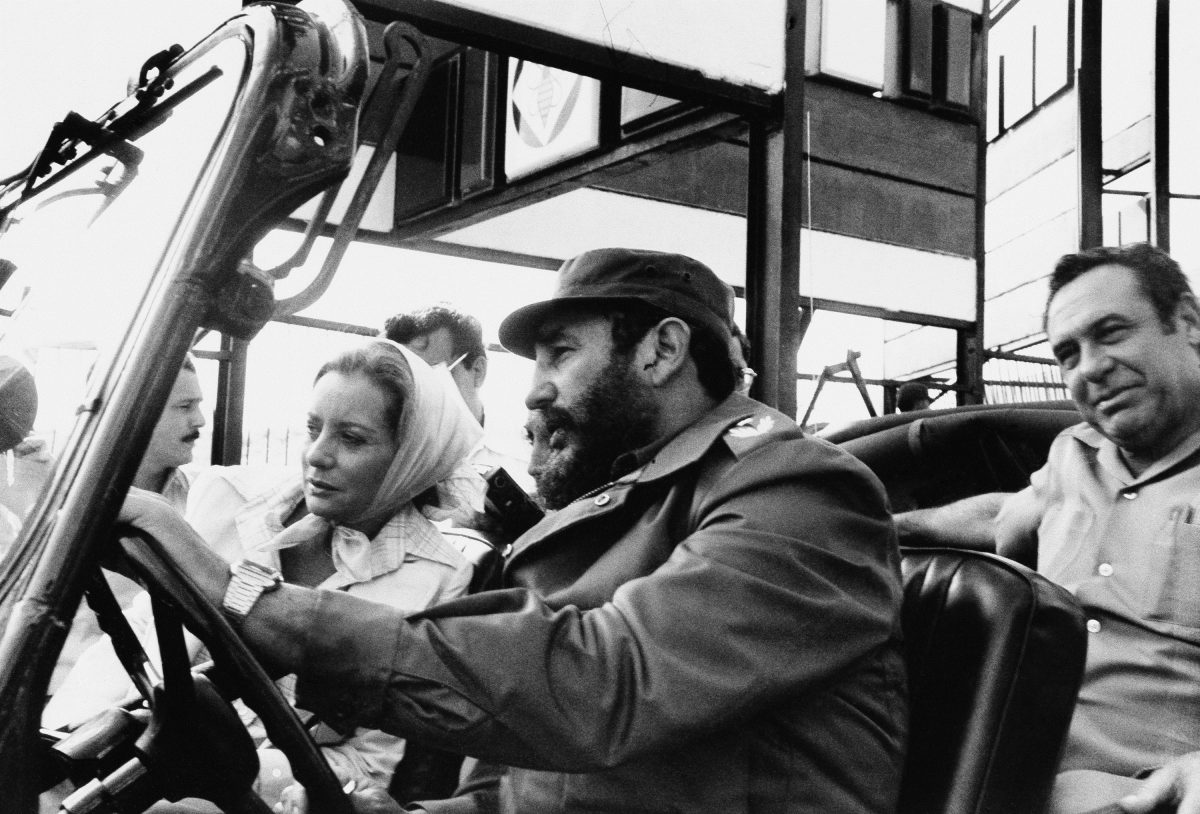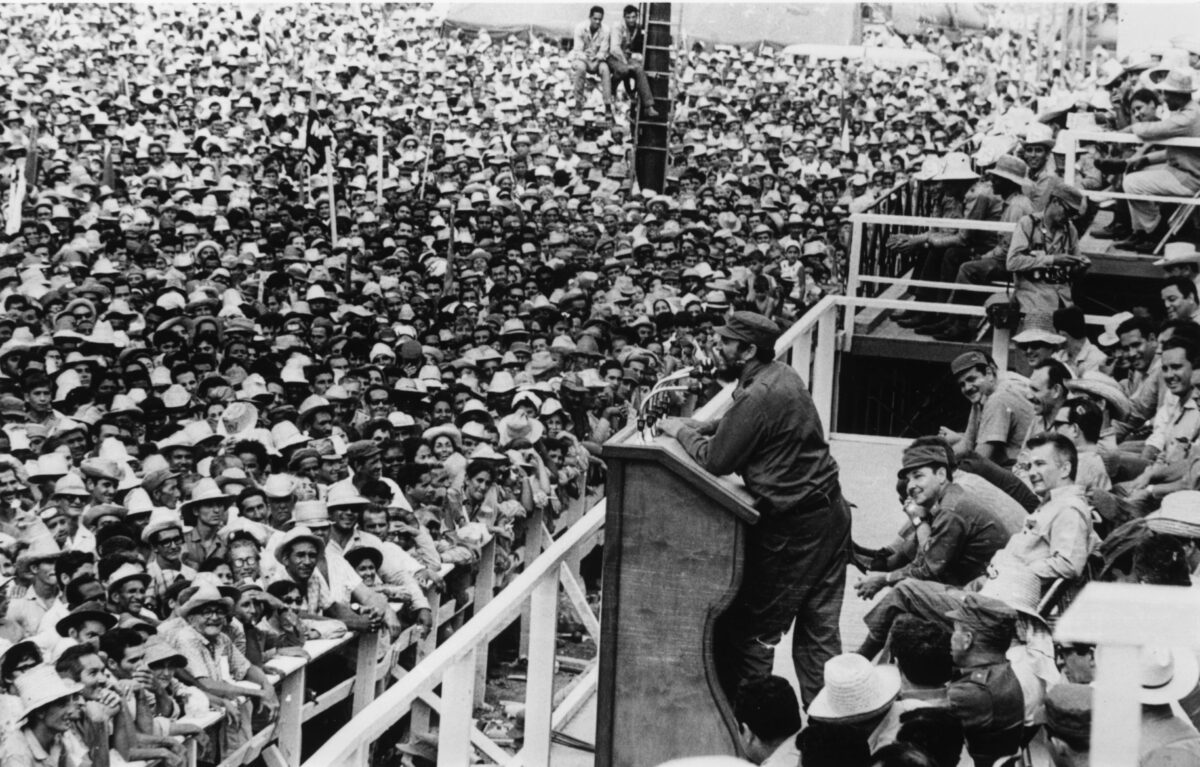The following article was copied and pasted from my Epoch Times electronic subscription to display their reporting and concern for truth and facts; and to provide a perspective not possible by big media and social media, as they only publish the leftist state approved narrative devoid of facts:
Cuba’s Failed Communism Led to Protests
Commentary
Thousands of Cubans protested against Cuba’s communist regime in the largest demonstrations to erupt on the island country since its founding revolution 60 years ago.
Despite Fidel Castro’s promise of a communist paradise at the start of his reign in the 1960s, Cubans today are hungry from food shortages, suffering from a lack of medicines, and angry at their central government for its mismanagement.
As countless communist experiments revealed in the 20th century, dictators drop their ideals in the face of power and luxury, leaving their people hungry, poor, and protesting. When these founding dictators die, the citizens of their countries remain to pick up the pieces of reckless communist experiments.
Cuba’s Historical Anti Communist Protests
The protests began with a demonstration in the city of San Antonio de los Baños, southwest of its capital city, Havana, but soon spread throughout the country with viewers inspired by protesters sharing the demonstrations through Facebook live streams.
Throughout the week, provinces all over Cuba marched to protest the Cuban communist regime. Outside of Cuba, demonstrators gathered in support of Cuban protestors in Miami, Washington D.C., and Wisconsin.
Cubans have had enough, pushed to the brink by a faltering economy.
The pandemic’s effective end to tourism contributed largely to the Caribbean island’s shrinking economy by 11 percent. In the first five months of 2021, travelers to Cuba shrunk by 90 percent. Changes in Cuba’s centralized fiscal policy sent the country into an inflationary spiral.
Cuban economists predict that Cuba’s inflation could exceed 500 percent this year. Along with currency devaluation, residents of the island face widespread shortages of basic goods such as food and medicine. Power outages have become more frequent in recent years due to lack of money.
Sara Naranjo, an elderly Cuban resident, states in this Twitter video, “I took to the streets because I am tired of being hungry. I don’t have water. I don’t have anything.”
Cubans have long struggled with economic hardship and the authoritarian regime’s inefficient central planning. But now, with smartphones and the internet, they have an outlet to connect and express their discontentment with the Cuban communist regime.

Cuban President Blames Protests on US Embargoes
Cuban President Miguel Díaz-Canel blames U.S. embargoes against Cuba for its longtime economic hardship.
The United States has basically imposed economic sanctions on Cuba since 1959. While Cuban communist leaders such as Canel are quick to shame the United States, few mention Cuba’s nationalization of United States properties in 1959 after its communist revolution. Almost all American investments in Cuba were confiscated, including electricity, communication companies, and banks, to turn them into Cuban state-owned enterprises.
Before the 1950s, Cuba’s American capital accounted for a large proportion of the Cuban economy and the two nations maintained a good relationship based on trade and military support.
After the 1960s Cuban Revolution, Castro nationalized more than 90 percent of his economy, including American capital. Castro also increased taxes on U.S. imports, while building trade alliances with the Soviet Union, America’s cold war communist rival.
In response, President Eisenhower cut sugar imports, diplomatic ties, and trade with Cuba.
The embargoes have shifted through the decades. Today, food and humanitarian aid exports are permitted to Cuba from the United States.
Protesters have voiced that while U.S. embargoes challenge the Cuban economy, they do not believe them to be at fault for Cuba’s current struggles. Rather, they blame Cuba’s centralized mismanagement of the country and its resources.
It’s easy to shame American powers for enacting embargoes on Cuba, but imagine if China was the country under scrutiny. Imagine if Pakistan suddenly announced the confiscation of all Chinese-invested corporate and non-corporate projects and nationalized them into Pakistani property. What would China do? What is a reasonable reaction from the Chinese regime?
Communist Cuba’s Evolution Is Similar to China’s
The Communist Party of China publicly recognizes only four socialist nations outside of China. They are North Korea, Vietnam, Laos, and Cuba.
The Cuban Communist Party is most comparable to the Chinese Communist Party.
After taking power in 1959, Castro quickly adopted measures to transform the Cuban economy into a planned and centralized body.
On March 13, 1968, Castro delivered a national live speech at the University of Havana, announcing that the next goal of the revolution was to declare war on peddlers. The speech lasted until late at night. Suddenly, hawkers and private owners became street rats that everyone shouted at and beat.
Hundreds of thousands of Cubans lost their land, property, and businesses when Cuban communist revolutionaries confiscated private property.
Early in the CCP’s reign, Mao led widespread killings of landlords and redistributed land to peasants. Millions were killed based on their social class. Their land was confiscated by the CCP and centralized for government use.
Cuba’s communist history also includes a failed attempt to jumpstart the economy through hugely ambitious agricultural goals that would go on to wreak havoc on the nation.

In 1970, Fidel Castro declared that Cuba would produce 10 million tons of cane sugar by July 15, and that the achievement would be a great victory for the Cuban revolution and socialism. Ultimately, they were unable to achieve the goal.
Experts, economists, and even the Soviet Union tried to warn Castro. He did not listen.
Sugar was planted everywhere and anywhere. Fields for livestock and other agriculture were pushed out for sugar cane. Everyone, including government officials, school children, and ministers, were tasked with harvesting sugar. Castro canceled Christmas and New Year holidays to continue work to meet the sugar output goal.
Not only was the output not reached, but the attempt at reaching such a ludicrous goal severely damaged other parts of Cuba’s economy and agriculture. The country immediately experienced shortages in milk, meat, water, textiles, produce, and grain. The over-investment of labor into sugar cane led to failing public infrastructure of drains, sewers, and buildings. The country experienced housing shortages as new construction stopped.
The failures of Castro’s 1970 10 million ton sugar cane harvest are similar to Mao’s failed Great Leap Forward—the second of the CCP’s many 5-year plans—and resulting Great Chinese Famine, regarded as one of the greatest man-made disasters in human history.
The CCP collectivized farmlands and aimed for the hugely ambitious goal of increasing the value of agricultural production by 270 percent, which the country did not even come close to achieving. The campaign was rife with overambitious goals by government officials, lies about harvest amounts, and absurd campaigns by Mao.
In 1958, Mao began a nationwide campaign to eliminate sparrow birds, due to their consumption of grain, resulting in the near-extinction of the species. The elimination of sparrows created a severe ecological imbalance, as locusts lost their main predator. The boom of locusts feasted on Chinese agriculture, leading to even lower grain harvests than when sparrows were around to eat grain.
In only 3 years, an estimated 45 million Chinese people died from the CCP’s agricultural failures. The death toll from the CCP’s Great Leap Forward is greater than the global death toll of World War I. Its toll is 450 times greater than the number of people killed by the Nagasaki atomic bomb.
In Cuba, the failures of an overambitious centralized planning economy also brought about widespread famine from shortages of basic goods. In 1990, 20 years after Castro’s takeover, Cubans resorted to eating cats and dogs to survive. Crime became rampant as people struggled to survive. People waited in long lines at state warehouses to get rations of fundamental food items like eggs.
Cuba had a population of 10 million, but as many as one million have relocated to the United States.
Today, Cubans are standing together shouting for freedom in the biggest protest in decades.
Castro harbored an idealistic 20th-century dream of a Cuban paradise—a paradise that he aimed to bring to life through violence, terrorism, and force. Like so many other communist regimes, the end goal of paradise justified the terrible sacrifices needed to get there.
There is nothing wrong with an ideal of total equality for all. Buddhism reminds us of the equality for all living beings. Christianity preaches generosity to the poor and love of all people and Islam lists generosity to the poor as one of its five pillars.
The problem with communist ideals is they use unrestricted violence and irrationality as a way to attempt to achieve these ideals.
Alexander Liao is a columnist and journalist in research on international affairs in the United States, China, and Southeast Asia. He has published a large number of reports, commentaries, and video programs in newspapers and Chinese financial magazines in the United States and Hong Kong.
Views expressed in this article are the opinions of the author and do not necessarily reflect the views of The Epoch Times.
Subscribe to Epoch Times DIGITAL News for just $1; after 2 months, your payment method will be automatically charged $9.99 every month, starting on September 11th 2021. You can cancel anytime. You will receive $30 in free gifts for subscribing, see at the following link:


